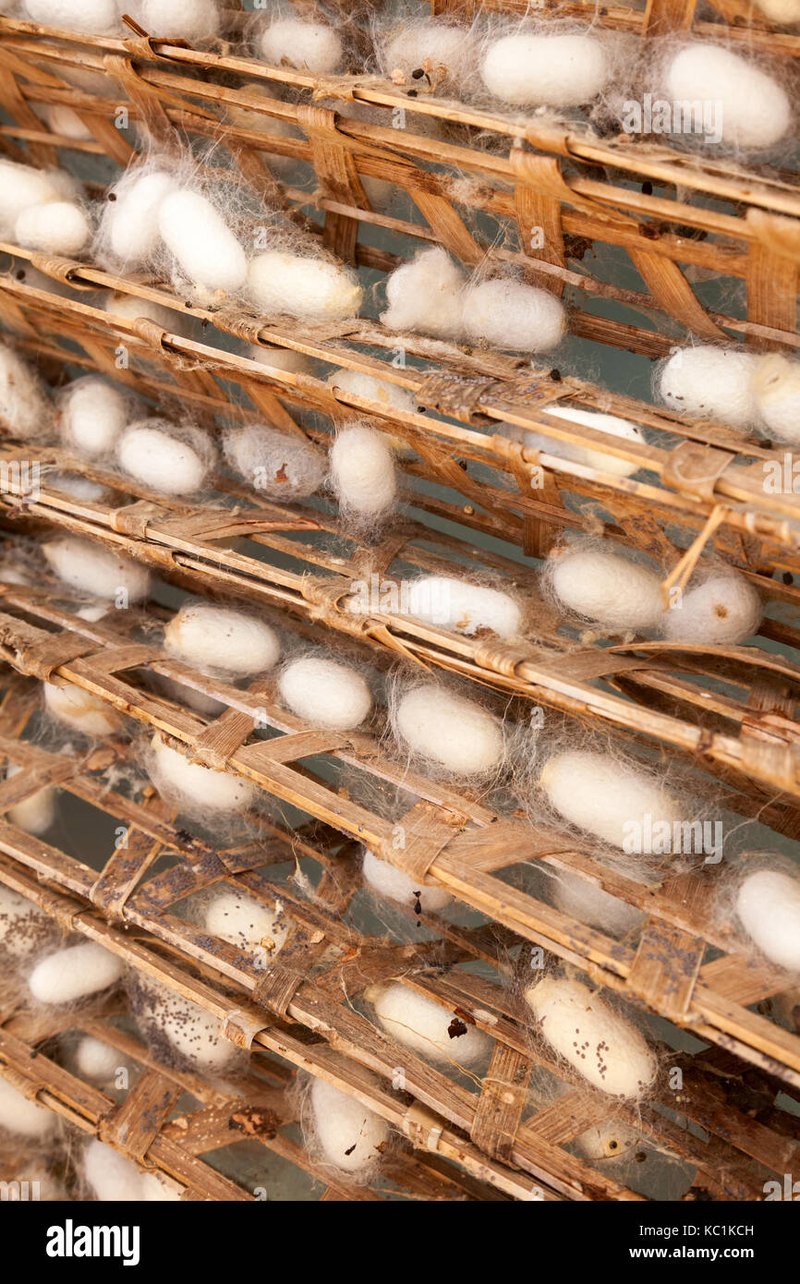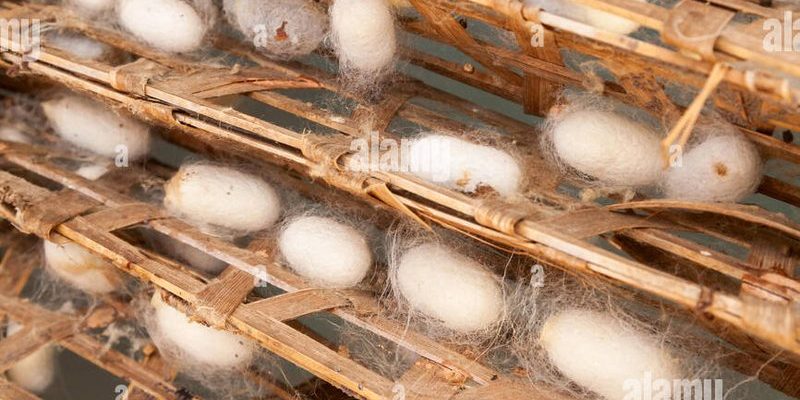
As we explore this topic, we’ll look at the potential benefits and challenges of incorporating silkworms into animal diets. You might be wondering about their nutritional value, how they’re produced, or even their environmental impact. Well, grab your coffee, and let’s break it down together in a friendly, no-fuss way!
The Nutritional Benefits of Silkworms
Silkworms are not just fascinating creatures; they are also packed with nutrients that can greatly benefit livestock. When it comes to protein content, silkworms can rival traditional feed ingredients. They typically contain 45-55% protein, making them an excellent choice for animal feed. This high protein level is crucial, especially for growing animals and those in production phases, like chickens and pigs.
But it’s not just protein that makes silkworms appealing. They are rich in essential amino acids, which are the building blocks of protein. Livestock requires these amino acids to build muscles and maintain overall health. Additionally, silkworms contain vitamins and minerals, including B vitamins and iron, contributing to the well-being of the animals consuming them. Imagine your livestock feeling more energetic and healthy—it’s something that every farmer would want!
Furthermore, using silkworms in animal feed can help reduce the reliance on fish meal, which has been overfished and is becoming increasingly unsustainable. By incorporating silkworms, not only do we create a more sustainable feed source, but we also support animal welfare by ensuring they receive balanced nutrition.
How Silkworms are Produced
Now, you might be curious about how these little critters are farmed. Silkworms are the larvae of the silk moth, and they thrive on a diet of mulberry leaves. Farmers rear them in controlled environments, which can be done on a small or large scale, depending on the desired output. It’s like a mini-factory of nature—an ecosystem designed to produce a high-quality protein source.
Typically, the farming process starts with the eggs, which hatch into larvae. The larvae are fed mulberry leaves until they grow to their full size. After that, they spin cocoons, which are used to produce silk. However, for animal feed, these cocoons can be harvested early, allowing for the silkworms to be processed before they transform into moths. The result is a rich source of protein, which can be dried and ground into a fine powder or used in its whole form.
This farming system is also relatively efficient. Silkworms have a high feed conversion rate, meaning they can grow quickly with less food compared to traditional livestock. This efficiency is something that could help address the growing demand for animal protein around the world.
Environmental Impact and Sustainability
Sustainability is a hot topic in all industries today, particularly in agriculture. You might be wondering how using silkworms in animal feed stacks up against traditional feed sources. The truth is, raising silkworms has a lower carbon footprint compared to livestock production. They require far less land and water, making them a more eco-friendly alternative.
Silkworm farming can also contribute to waste reduction. Farmers can use agricultural by-products, like mulberry leaves, which may otherwise go to waste, as feed. This approach not only utilizes existing resources but also minimizes waste. So, in a way, silkworms help close the loop in our food systems.
Moreover, silkworms can thrive in various climates, making them adaptable to different regions. With proper farming techniques, even areas with limited resources can produce silkworms, providing local farmers with an alternative protein source. This adaptability could help bolster food security in communities that struggle to access traditional animal feed.
Challenges in Using Silkworms for Animal Feed
While there are plenty of benefits, it’s essential to acknowledge the challenges that come with using silkworms in animal feed. For one, the infrastructure for silkworm farming may not be well-established in some regions. Farmers may require training on raising silkworms and processing them into feed, which can be a barrier to entry.
Additionally, the acceptance of silkworms as a feed source may vary among farmers and consumers. Some might be hesitant to embrace silkworms, viewing them as unconventional or unappealing. Changing perceptions can take time and may require educating the public on the benefits and safety of this kind of feed.
Another challenge includes ensuring quality control and safety in feed production. It’s essential to maintain high standards to avoid contamination or potential health risks. This need emphasizes the importance of regulation and oversight in the growing industry of silkworm-based animal feed.
Examples of Current Usage in Animal Feed
You might be surprised to learn that silkworms are already being used in various animal feed applications around the world. In some Asian countries, farmers have started incorporating silkworm meal into poultry and fish feed. The results? Healthier animals and reduced feed costs. It’s like discovering a secret ingredient that makes everything better!
For example, studies have shown that substituting a portion of traditional feed with silkworm meal can improve growth rates in chickens and fish. In aquaculture, where protein sources are critical, silkworms offer an attractive alternative to fish meal. Fish farmers are increasingly turning to silkworms as a sustainable source of protein, which can help alleviate overfishing concerns.
Moreover, some innovative feed companies are experimenting with silkworms in pet food formulations. With the growing trend of using high-quality protein sources in pet diets, silkworms stand out as a nutritious and sustainable option. It’s a win-win: pets get the protein they need, and manufacturers can promote environmentally friendly products.
Future Prospects for Silkworms in Animal Feed
Looking ahead, the potential for silkworms in the animal feed industry is quite promising. As the demand for sustainable protein sources continues to rise, silkworms can play a crucial role in meeting those needs. Researchers are actively studying the best ways to cultivate and process silkworms to maximize their nutritional benefits and minimize production challenges.
Furthermore, as consumers become more environmentally conscious, they’ll likely drive demand for sustainable animal products. This shift in consumer behavior can push farmers and feed manufacturers to explore innovative solutions like silkworm-based feeds. Honestly, it could lead to a significant transformation in how we approach animal nutrition.
Investments in technology and research can also enhance the scalability of silkworm production. Advances in farming methods, breeding, and feed processing will likely make it easier for farmers to integrate silkworms into their operations. In time, we could see a more widespread acceptance and utilization of silkworms in the livestock and aquaculture industries.
So, can silkworms be used in animal feed industries? Absolutely! They offer a rich source of protein and nutrients, along with environmental benefits that traditional feed sources can’t match. While there are challenges to overcome, the potential for silkworms is worth exploring. As more farmers and feed manufacturers catch on to the advantages of using silkworms, we might just be witnessing the dawn of a new era in sustainable animal nutrition.
Who would have thought such tiny creatures could have such a big impact? As we continue to innovate in our food systems, it’s exciting to think about the possibilities that silkworms bring to the table—or should we say, the feed trough!

